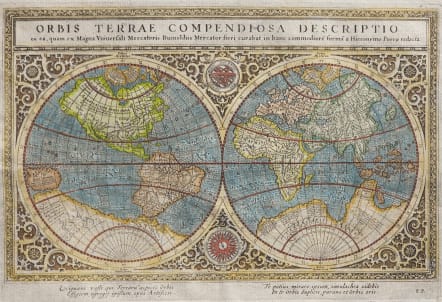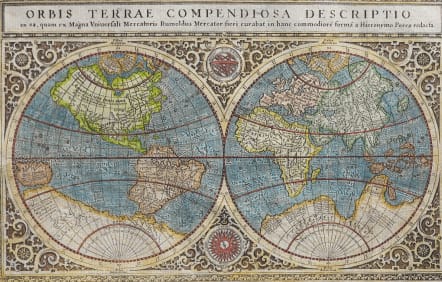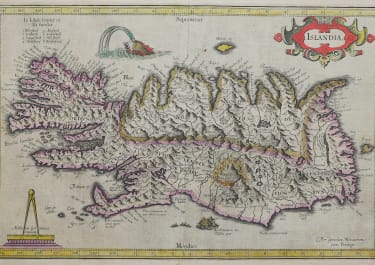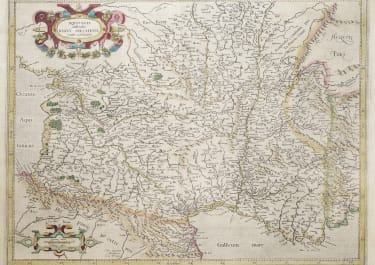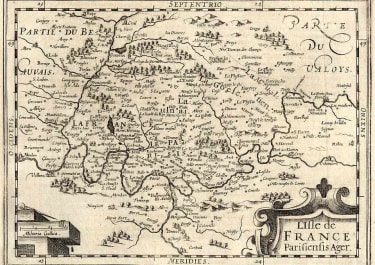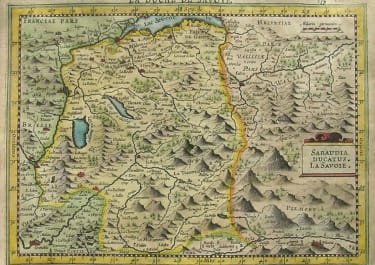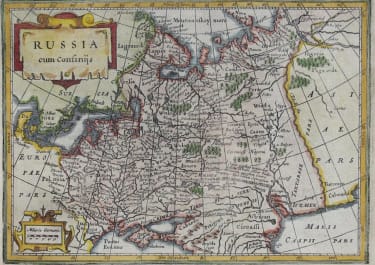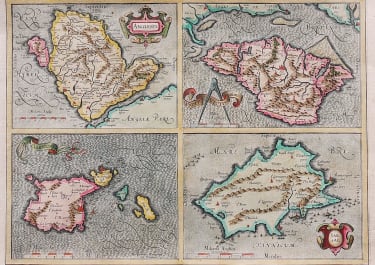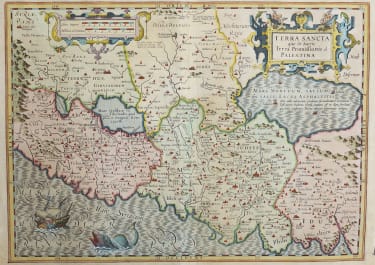ORBIS TERRAE COMPENDIOSA DESCRIPTIO
Sold
Superb reduced version of Mercator's famous 1569 World map. Engraved by Porro. Published by Magini. The title mentions Romuldus Mercator .
Gerard Mercator's world map was condensed into double-hemisphere form by his son Rumold, preserving the bulge to the coast of South America. The hemispheres are surrounded by an elaborate strapwork border; between them lie an armillary sphere and compass-rose.
Girolamo Porro was able to preserve an incredible amount of the original detail in his reduction, including text on the Southern Continent
The map includes a classical late 16th Century configuration of the World, including a Northwest Passage, unusual depiction of the North Pole, massive Terrae Australis, narrow passage between South America and Terrae Australis, bulging western portion of South America and unusual treatment of North America, to name but a few of its features. Some of the placenames mentioned by Marco Polo in Asia are present, as are several of the mythical islands of the Atlantic.
Finely engraved Excellent hand colour
Mint condition
REF : Shirley 194.
code : M4417
Cartographer : GERARD MERCATOR
Date : 1598c
Size : 17*25 cms sheet 21.5*27 cms
availability : Sold
Price : Sold
Gerard MERCATOR
Originally a student of philosophy Gerard Mercator (1512-1594). He became an expert in land surveying and cartography, as well as a skilled engraver.His first maps were published in 1537 (Palestine), and 1538 (a map of the world), although his main occupation at this time was globe-making. He later moved to Duisburg, in Germany, where he produced his outstanding wall maps of Europe and of Britain. In 1569 he published his masterpiece, the twenty-one-sheet map of the world, constructed on what is now known as Mercator's projection.
It was during this period, while teaching cosmography at Duisburg, that Mercator realised the pressing need for a modern collection of maps to supersede the Ptolemaic atlases. This project was gradually expanded to be a complete description of the Universe, both heaven and earth, with other volumes on the Creation, Genealogy and History and a Chronology. The description of the earth was to be in two parts, a modern geography and a Ptolemaic atlas, a massive and over-ambitious project. In fact, only the Chronology and the Ptolemaic Geographia were completed in his lifetime, and it was left to his son, Rumold, to complete and publish the world atlas in 1595. Entitled Atlas, sive Cosmographicae Meditationes de Fabrica Mundi, this was the first time the name "Atlas" was applied to a bound collection of maps, and, like Mercator's projection, has remained in everyday use to this day.
After Rumold's death in 1599, the plates for the atlas were published by Gerard Jr. Following his death in 1604, the printing stock was bought at auction by Jodocus Hondius, and re-issued well into the seventeenth century.
The Atlas Minor was reprinted,reengraved by many 16th century Dutch cartographers including Cloppenberg, Jansson etc.

